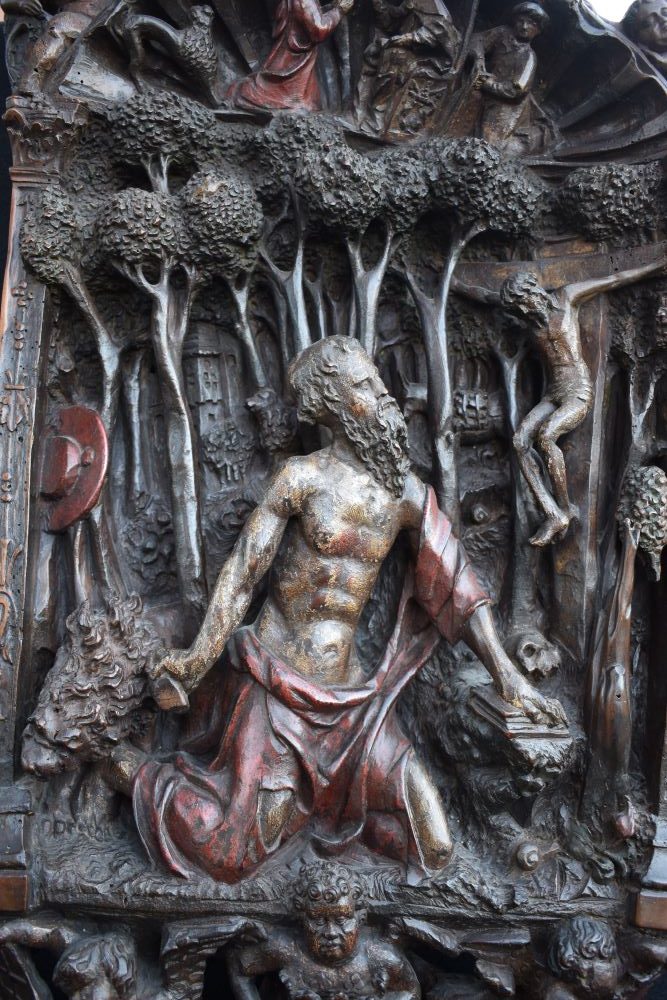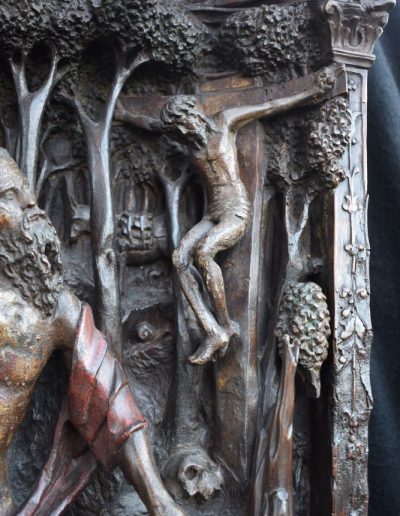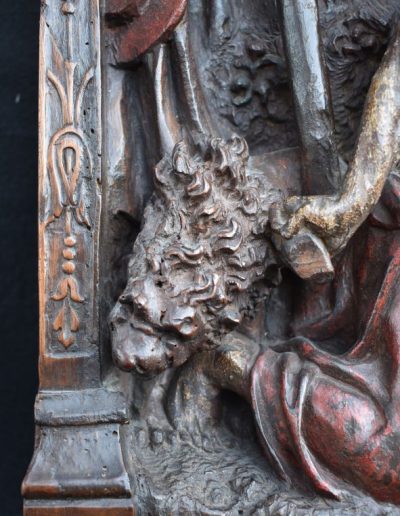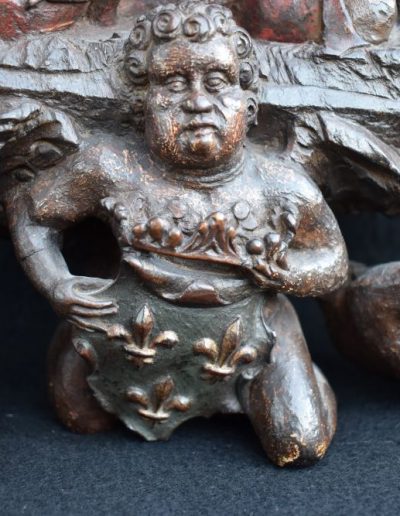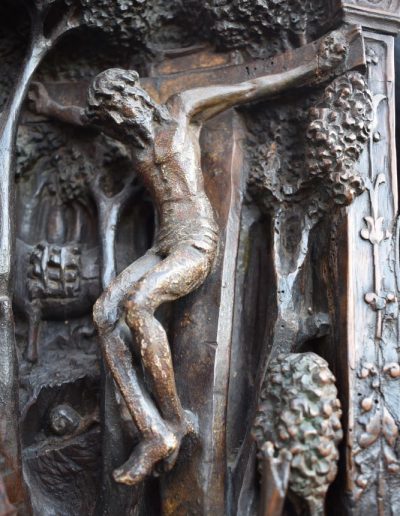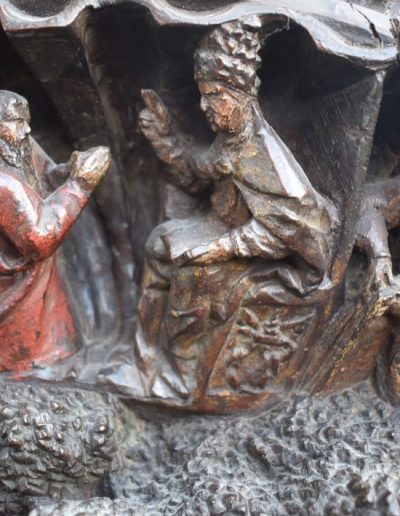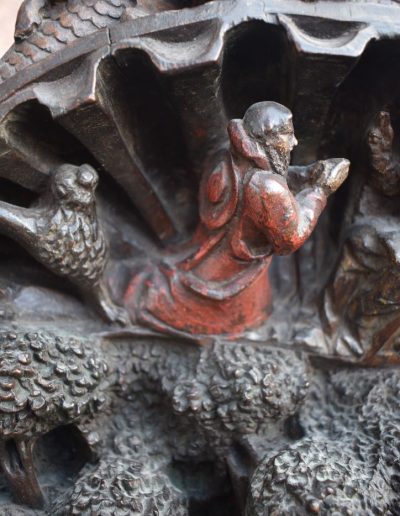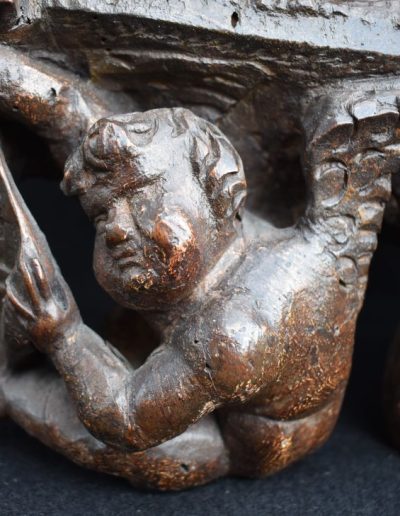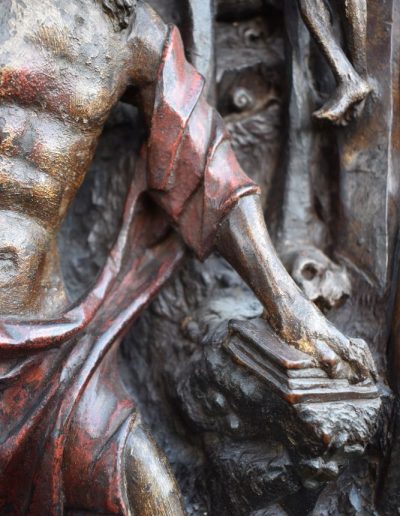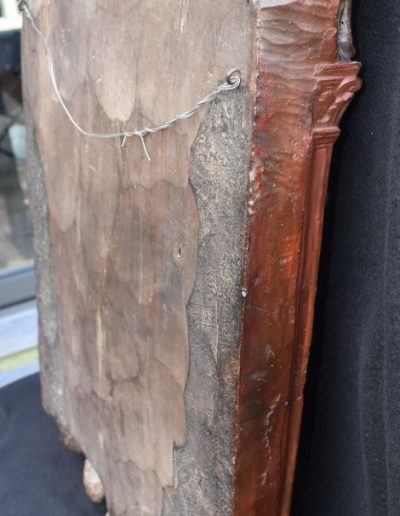Medieval panel “Saint Jerome BC at the Crucifix”, late 16th century.
H 70cm W 39cm
€ 6.000,00
Prijs incl. 6% BTW & Verzendingskosten
Meer informatie
Jerome of Stridon, or Saint Jerome (347-420), Doctor of the Church, is one of the four Fathers of the Church. Jerome came from Strido (or Stridon), located in the Dalmatian region, near present-day Ljubljana (Croatia); He must have been born about 341; others think 347. He studied in Rome; there he developed a great love for classical literature, but after a heavenly vision he left it to devote himself only to the study of the Bible. He was also baptized then. After the death of Pope Damasus (December 11, 384), he set out on a journey to the holy places of Palestine, visited Didymus the Blind for a month, visited the monks of the Nitrian desert, and finally settled in Bethlehem in 386. where he lived as a hermit until his death on September 30, 420. The representations of Saint Jerome in medieval and Renaissance art focus on two motifs that refer to two periods in his life: the time of penance in the desert. Through asceticism (fasting and self-flagellation) he wanted to purify his body in order to follow the spiritual path. And those of his old years spent translating the Bible (the Vulgate), in art he is depicted seated at a lectern or kneeling before a crucifix; often with a lion with him. According to legend, a lion came into the cave where Jerome had retreated. He was wounded and the hermit overcame his fear and removed the thorn from the animal’s leg. From that moment on he had a faithful companion who protected him from evil. There is also often a red discarded cardinal’s hat to be found. He was a scholar and one of the few who also learned Hebrew. Jerome became a cardinal, lived as a hermit, subjected himself to asceticism and translated the Bible from Hebrew into Latin. He was canonized in the 13th century and has been venerated ever since, on the day of his death September 30, 420, becoming one of the four Catholic Church Fathers (along with Hyppolit, Ambrosius, and Gregorius).
We show an exceptional Medieval religious wooden (altar) panel made in France around the end of the 16th century. It is magnificently carved in high relief in walnut with clear traces of red polychrome. The main motif is Saint Jerome with a long beard and red robe, remnants of his cardinal habit. who in the presence of a lion (his companion) kneels before the crucified Christ with crossed feet and with typical medieval features such as horizontal ribs, a suffering Christ. Saint Jerome holds a stone in his right hand, his left hand resting on the bible that is on a large stone. On the rock is a human skull as a sign of transience. His red cardinal’s hat has been thrown off out of respect and is on the left in the decorum. In the background we see a very nice row of slender tall trees with a spherical crown. Even more in the depths we see houses and also the image of a sheep that will probably be sacrificed by Saint Jerome. At the top we see angels with Saint Jerome in red polychromy, seated before the image of the blessing Pope Damasus, with his companion the lion behind him. Behind the Pope is a kneeling turbaned figure whose meaning is not very clear. At the very bottom, three angels are depicted in high relief, one of which bears a French coat of arms with three fleurs-de-lis in the center, which is typically French. We cannot identify this further. This panel dates from the end of the second half of the 16th century.
Condition: signs of age, but otherwise in excellent condition.

